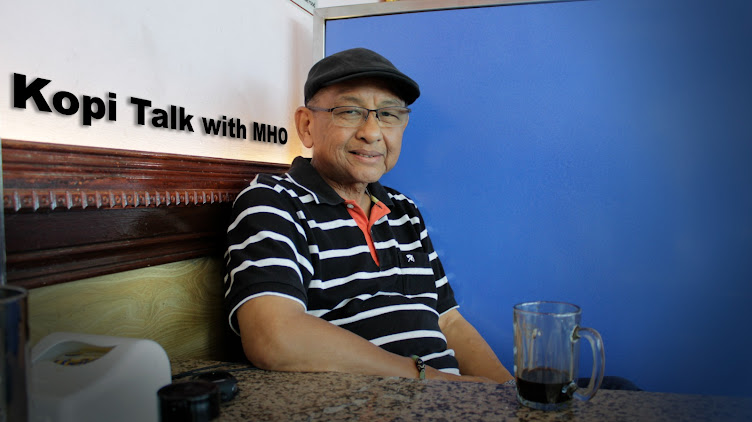This is not the first time I have been labelled "mata lalat" (fly eyes) or "mata langau" (blowfly eyes) for my journalism.
Throughout my career as a reporter, I have encountered officials and individuals in power who prefer to dismiss rather than address the issues I highlight.
I was told that I “focus too much on the negative” and that I should “find the good stories instead of exposing weaknesses.”
The latest bee eyes vs. fly eyes video, which appeared soon after my article on Brunei’s tourism issues, is just another example of this age-old tactic - implying that those who highlight flaws are simply looking for filth rather than contributing to the nation’s progress.
But let’s set the record straight:
Fly Eyes Journalism Is Not the Enemy - It Is a Necessity
The truth is not always pretty. Sometimes, it reveals incompetence, inefficiency, or mismanagement.
But should journalists ignore these realities for the sake of being polite?
A good journalist is not here to please the authorities; a good journalist is here to serve the public.
When I report on:
o Brunei’s tourism struggles, I am not being negative - I am pointing out what needs improvement so the sector can thrive.
o Employment challenges and economic issues, I am not attacking the government - I am advocating for a better future for our youth and workforce.
o Flaws in public policies, I am not being disruptive - I am encouraging solutions based on facts and public sentiment.
So, if that makes me “mata-lalat” in the eyes of those who want to avoid accountability, be it. But let me ask:
o Is a doctor "negative" for diagnosing a patient’s illness?
o Is a mechanic "destructive" for pointing out a car’s engine failure?
o Is a leader "weak" for admitting flaws and working to fix them?
Of course not. Likewise, a journalist who investigates problems, asks tough questions, and exposes the truth is not a nuisance - he is doing his job.
The Real Threat to Brunei: Press Release Journalism and Management by Deceit
Brunei does not suffer from too much critical - journalism - it suffers from too much press release journalism. We have enough articles filled with:
o Flowery language about "successes"
o Quotes from officials repeating the same talking points
o Speeches filled with promises that are never followed up
What we lack are journalists who:
o Ask difficult but necessary questions.
o Follow up on past promises and hold leaders accountable.
o Write not just for those in power but for the people who are affected by decisions.
This is why fly-eye journalism is important. Because someone has to look into the corners where others refuse to see.
Someone has to uncover what is being hidden. Someone has to push for better governance, not just glorify the status quo.
Management by Deceit (MBD): A Culture of Concealment
A more dangerous trend than mere press release journalism is Management by Deceit - (MBD) - where problems are not solved but are instead covered up with superficial policies and empty statements.
Instead of fixing broken systems, those in power manufacture success stories that exist only on paper.
o Public funds are misallocated, but reports claim "efficient spending."
o Economic struggles persist, but officials cite "steady progress."
o Policies fail to deliver real impact, but leaders boast about their "achievements."
MBD allows inefficiencies and corruption to fester unchecked. It enables those in power to suppress reality while maintaining an illusion of progress. And when journalists expose these deceptions, they are labelled as "negative" - as if identifying a problem is worse than allowing it to continue.
Moving Forward: A Stronger Media for a Stronger Brunei
If Brunei wants to progress, it does not need a media that only —praises—it needs a media that educates, informs, and questions.
1. More Space for Constructive Criticism
Journalists should not be treated as enemies for reporting inconvenient truths. The government and institutions must recognise that accountability is not an attack - it is a tool for improvement.
2. A Culture of Public Engagement
Rather than dismissing criticism, authorities should engage with journalists and the public in open discussions. If there are misunderstandings, clarify them. If there are mistakes, correct them. If there are valid concerns, act on them.
3. Encouraging Ethical Journalism
Journalists, too, have a duty - to ensure that their reporting is fair, factual, and constructive. Investigative journalism should be about truth, not personal agendas. Brunei’s media does not need to be all "bee eyes" or all "fly-eyes" - it needs both.
We need the optimism of bees but also the scrutiny of flies. Because progress is not built on just seeing the good but on fixing what is broken.
To Those Who Call Journalists “Flies”
I ask: Are you uncomfortable with the journalist, or are you uncomfortable with the truth they reveal?
The more those in power resist critical journalism, the more they show that they fear accountability. But accountability is not a threat to good governance - it is a pillar of it.
For the past three decades, I have been called mata lalat and mata langau, but it has never demotivated me.
Because in journalism, the ultimate loyalty is not to power but to the truth. You may call me ‘mata-langau,’ but I will always be ‘mata-rakyat’ - because Brunei deserves the truth. (MHO/02/2025)


.jpeg)

